A Crash Course on Getting Started with Cloth Diapers
This post may contain affiliate links. View my disclosures page for more information.
Along with the many types of things you can put into a baby’s mouth, there are a number of things to put on their bums and ways to catch what comes out the back end. As with all things parenting, you make the choice that’s right for you and your family! Cloth diapering is one of the choices we made, and after 3 1/2 years of wrapping my babies in cloth, I’m here to give you a crash course: Cloth Diaper 101. Here I’m going to discuss the basics about the diapers; you can find more on absorbency, overnight diapering, how to clean and launder diapers, troubleshooting, and repairs in the subsequent posts.
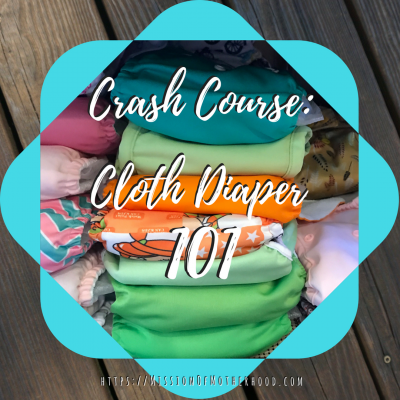
This post and the ones following it are going to contain a lot of pictures — a picture is worth a thousand words, right?! Well also, a good photographer is EXPENSIVE, so thank you for bearing with me in my afternoon-lighting-dead-of-summer-back-deck-photoshoot. Hopefully they are clear enough to get the point across. I tried to keep them as generic as possible (there are many many many, too many to count, diaper manufacturers out there and fundamentally all covers are the same, all inserts absorb messes, and all need a way to stay closed, etc.) while still being detailed enough to be helpful to a beginner without overwhelming. Let me know when/if you make it to the end if I’ve achieved this goal!
Terms
Here are some commonly abbreviated terms/shorthand. Don’t worry if you don’t understand yet, I’ll put some of them in context later as the topic arises.
- AIO/AI2 – all in one, all in two
- FST – flour sack towel
- OS – one-size
- CD – cloth diaper/cloth diapering
- MF – microfiber
- fluff – cloth diaper
- OTB – on the baby/on the bum
- PUL/TPU – Poly-urethane lining
- pre-loved – previously owned by another CD mama
Anatomy of a Cloth Diaper
Cover is the “water proof” material that the outer parts of diapers are made from. Most of mine are PUL and that’s what seems to be the most common, so that’s what you’ll see me use here. I’m generally referring to both PUL/TPU interchangeably, though.
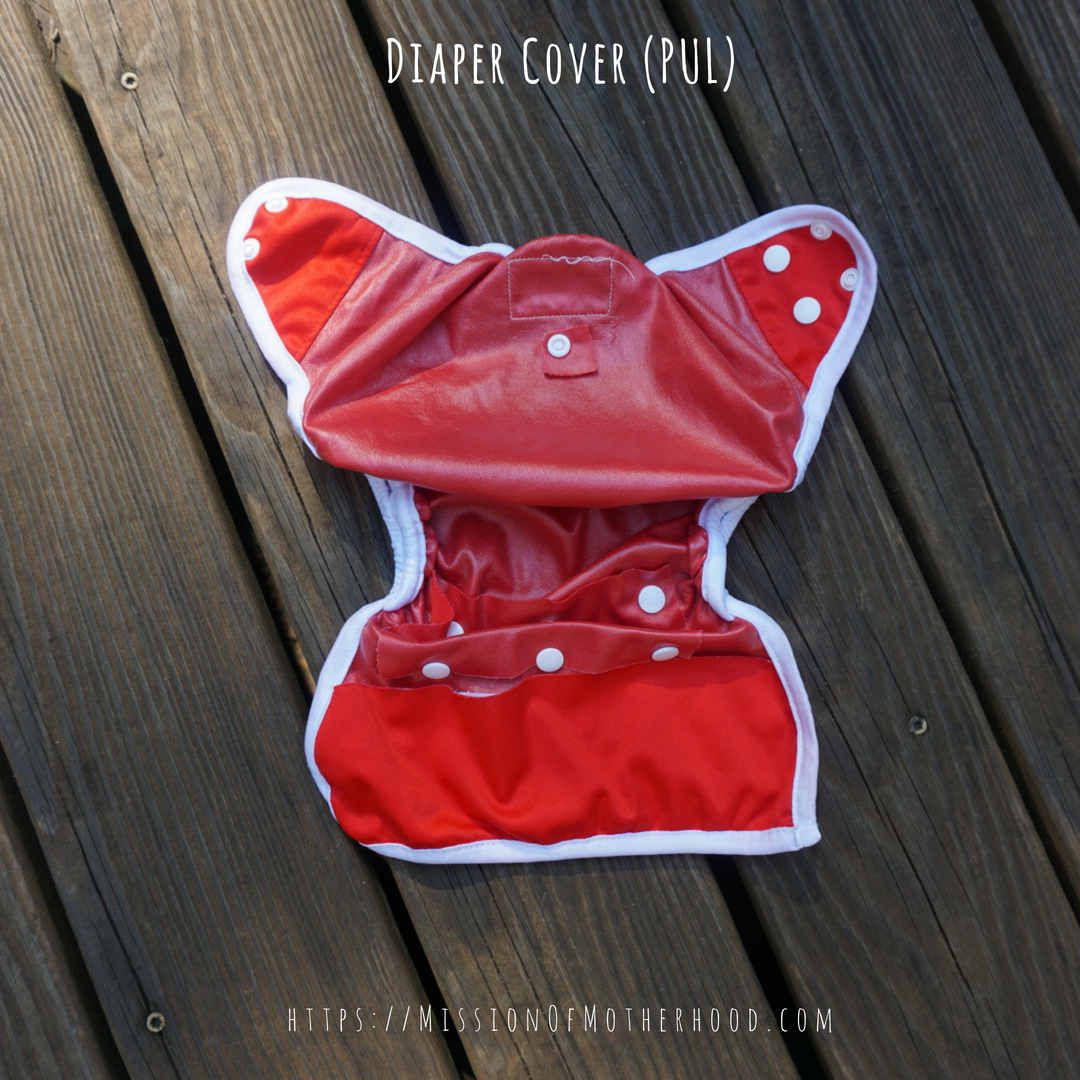
Insert is the absorbent part of the diaper. These can come in a variety of shapes, sizes, colors, kinds, and materials, but this is what holds the goods. Your cloth diapers will not hold anything if you don’t have an insert. Sometimes the inserts are built in to the diaper, but sometimes you have to add them. Most of the time inserts go in pocket diapers, but not always. More on that below in “types of dipes.”
Liner is the part of the diaper that touches the baby’s skin. These also come in a variety of shapes, sizes, colors, etc. Depending on the maker, it’s usually fleece, felt, polyester, or some bamboo viscose. The liner is not usually very absorbent, and many of them come in fleece because it feels dry: the pee/poo pass through the fleece into the absorbent insert, keeping baby more comfortable until the next change. Depending on the material, not all inserts can go directly against a baby’s skin for various reasons.
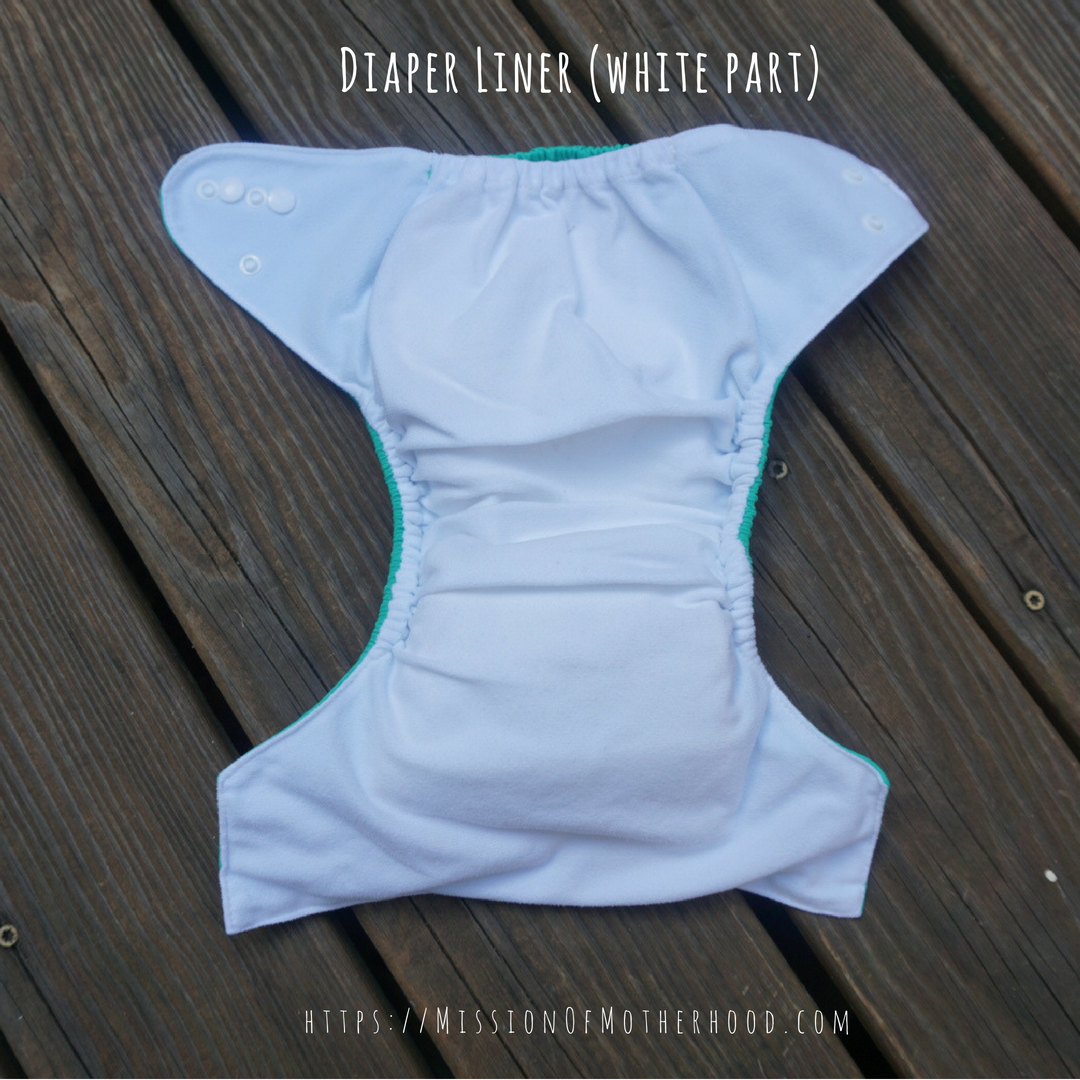
Disposable Liner is what it sounds like: a disposable piece of (ideally biodegradeable/flushable) material that helps make the cleanup of solids easier. I generally don’t use disposable liners until babies are consistently eating solids. Infant poop washes right off (depending on the material of the diaper, it may leave a stain behind). Breastfed baby poop is water soluble! #hallelujahhands. So there’s no need to scrape/rinse off the poop unless your washing machine is super old or terrible, and/or until your kiddo starts regularly eating/pooping solids. Even though these disposable liners claim to be flushable, I don’t flush them. We are on a septic system and I’m not taking that risk. They do biodegrade though, so I use them to take solids out of the diaper, knock whatever is loose into the toilet, and then put the liner in the diaper genie for disposable diapers (keeps the stink out).
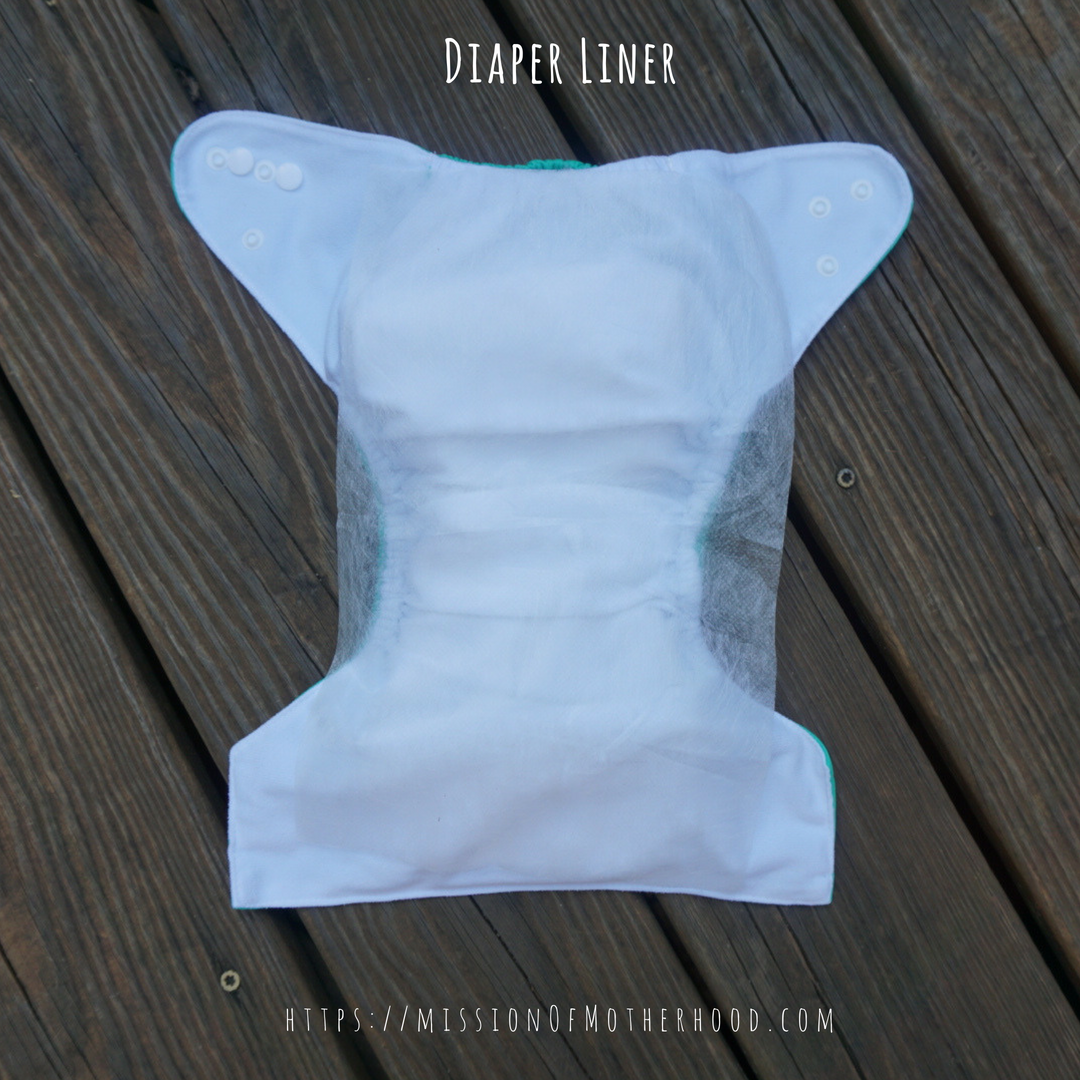
Snap/Velcro (aka Aplix/Hook and Loop) are the many types of closures a cloth diaper can have. This is largely personal preference. I find snaps hold up better (and I have a small hand-held snap press for making repairs on my own if I need to, that was $10 at JoAnn or Amazon), where Velcro tends to wear out, pick up lint, and stick together in the laundry. Velcro can be replaced, but requires a little more work with a sewing machine. It’s also easier for a baby to open, and yes, some babies DO take their diapers off! However, there’s something to be said for the quick ease of Velcro with a wiggly baby, and it’s also easier for non-CD caregivers who aren’t used to snaps to get a good fit.

Rise is the snaps in the vertical portion of the diaper. These are usually only on one-size (OS) diapers, but some others have them. There are a number of ways to adjust the rise, and there are a few variants but for the most part, most snap one-size diapers can be adjusted to three sizes: small, medium, and large. Some that have a double layer of snaps across the waist can be adjusted to fit a fourth size: newborn.
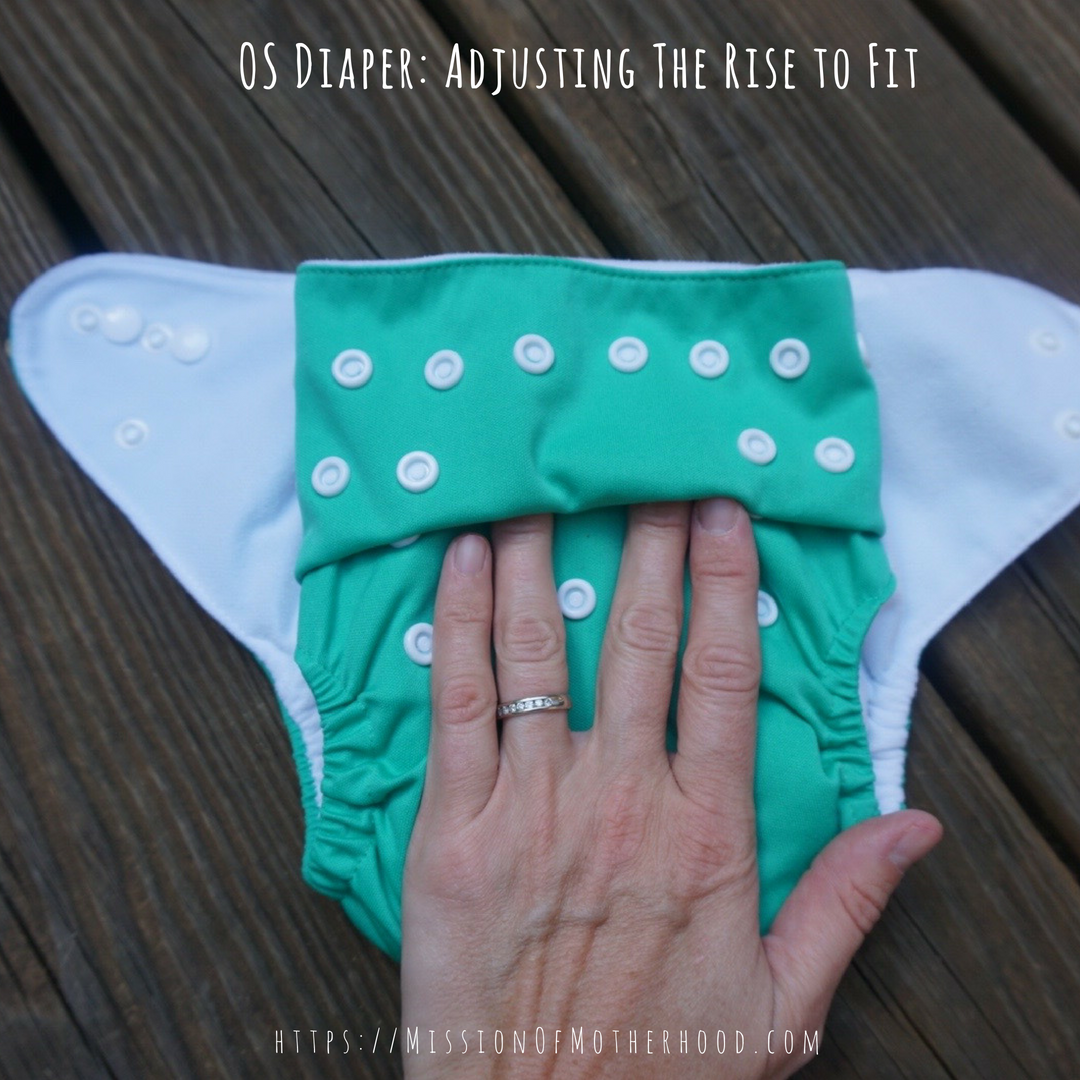
OS diaper with double-layer top snaps adjusted to the “newborn” size (for these pictures I used a pocket diaper, but any OS will do):

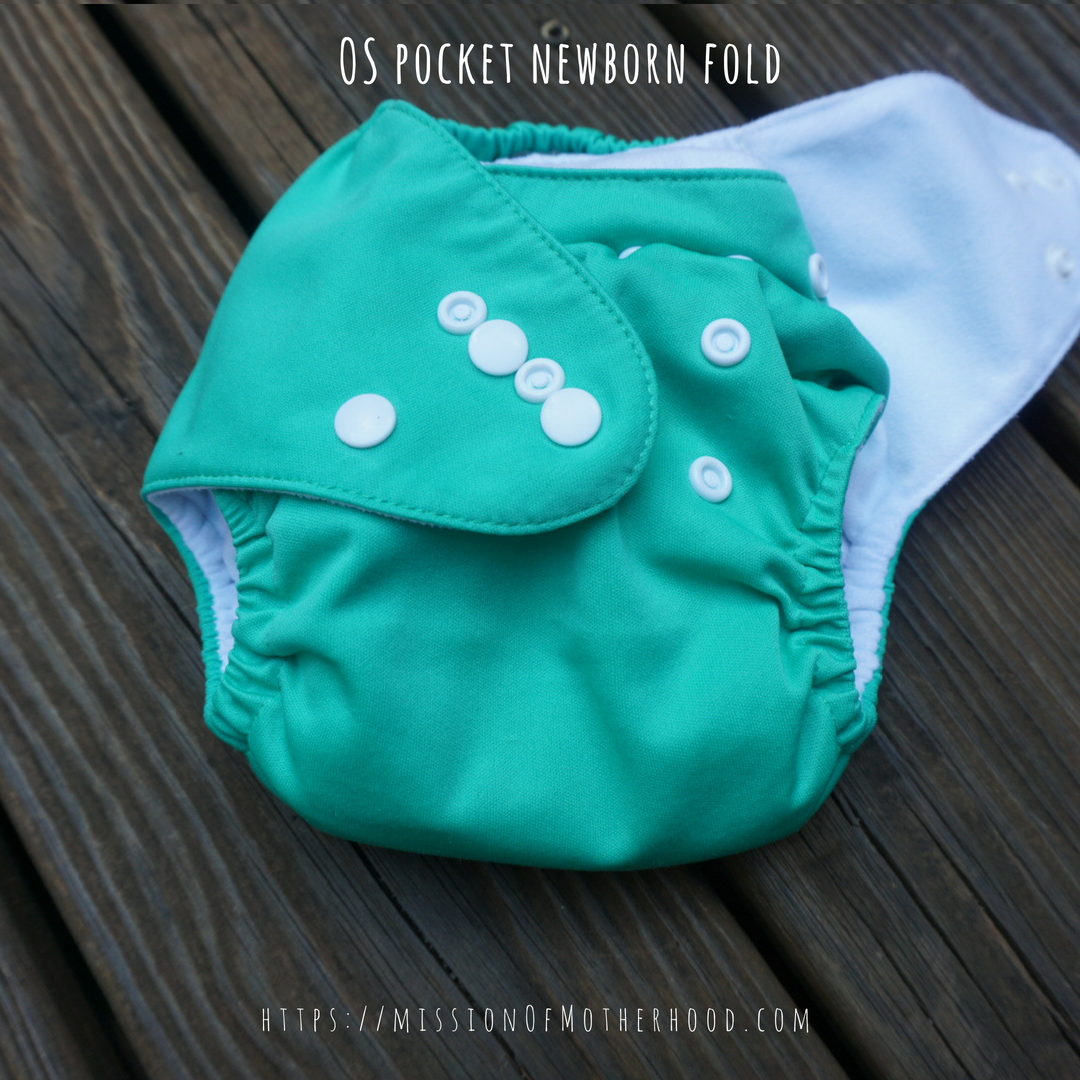

OS diaper adjusted to the “small” size:
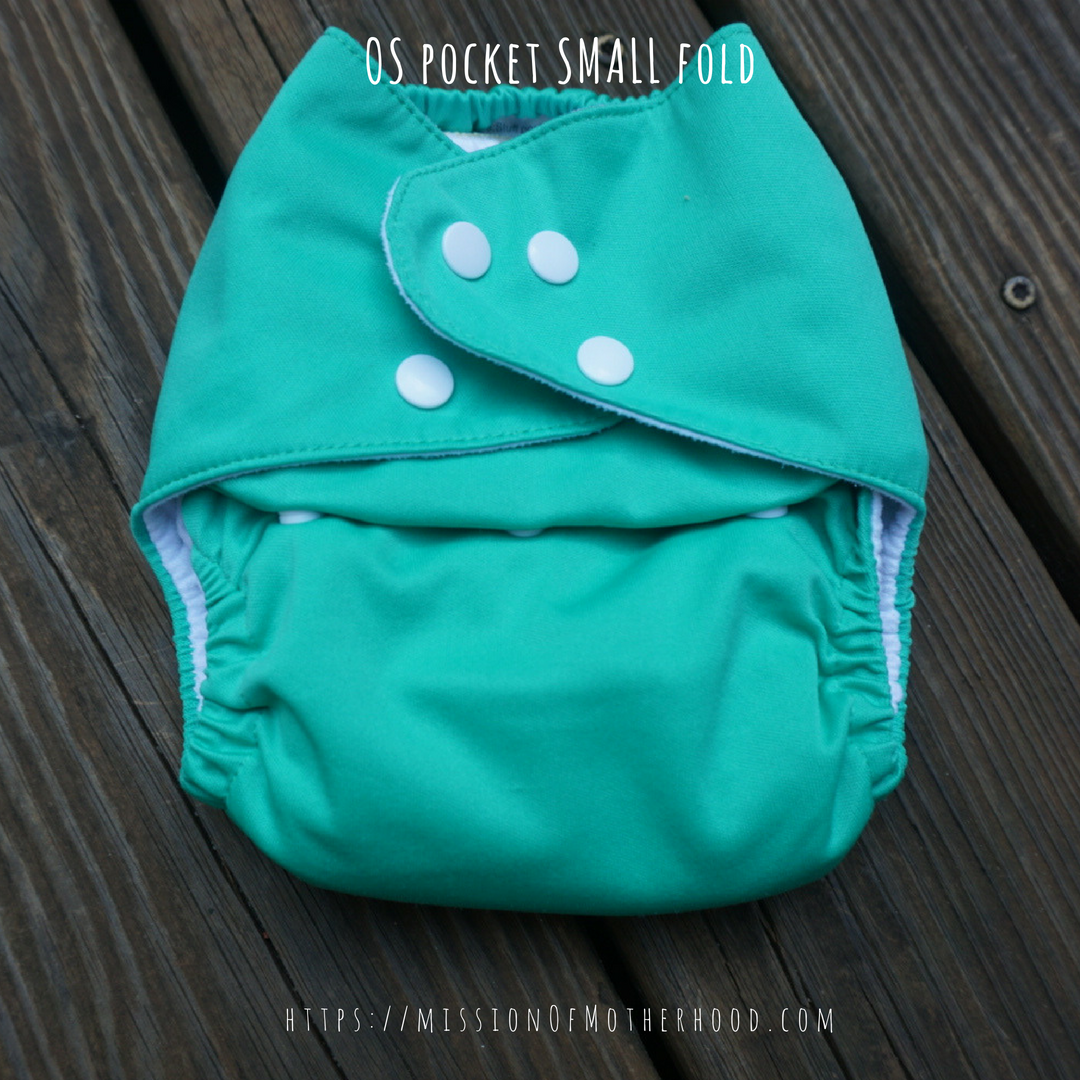
OS diaper adjusted to “medium” size (usually for crawlers, but depends on your baby):
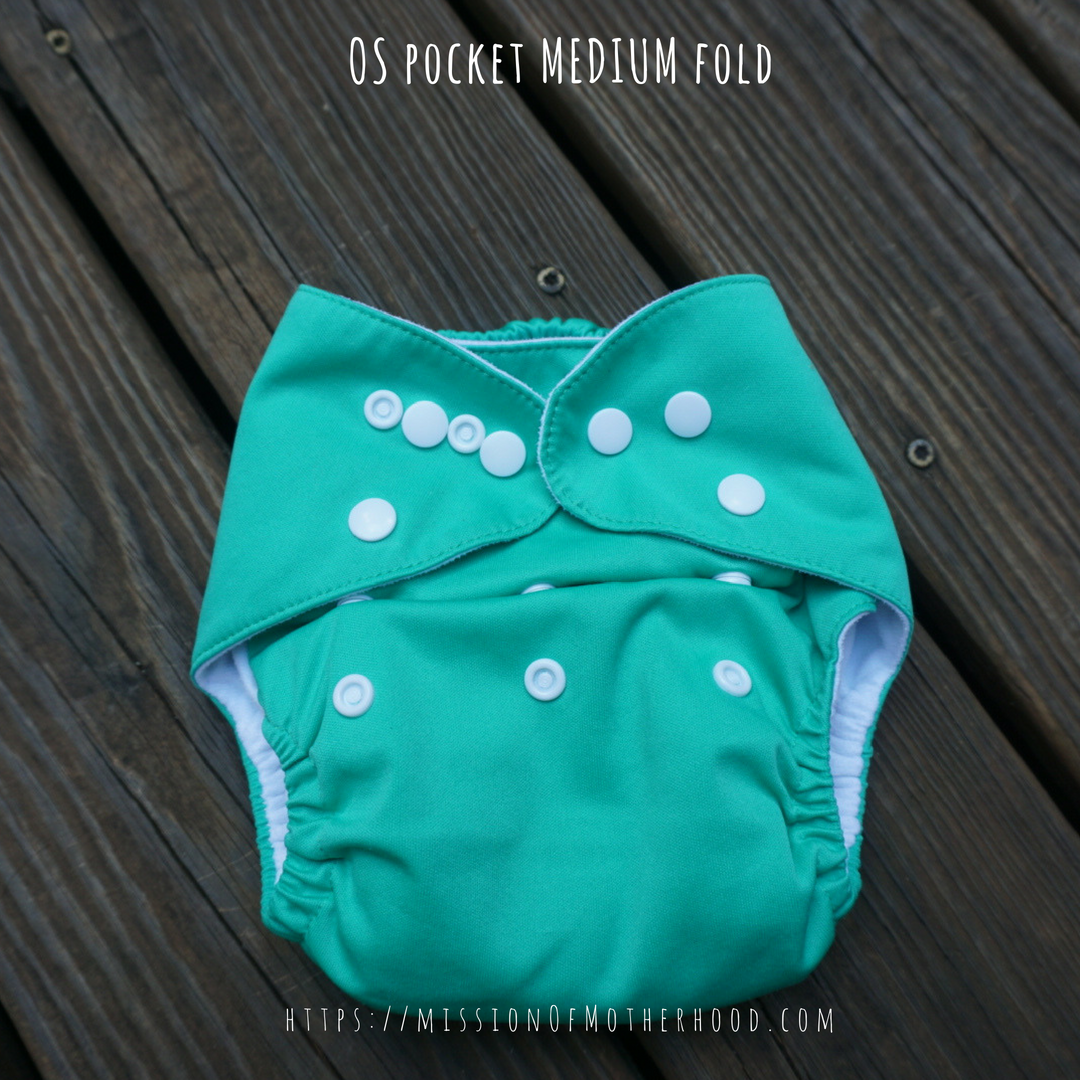
OS diaper adjusted to “large” size for walkers or older babies (but depends on your baby):

Gusset is the elastic at the crotch that goes around the baby’s legs. Some diapers have a double-gusset which helps keep messes even more contained. In pre-loved or well-used diapers, you may notice the elastics in the legs and gussets beginning to relax. These are easy to replace. Some inserts come with a gusset, helping contain messes even more. Double gussets are also super helpful on smaller babies or skinny-legged babies, because they help get a better fit where it matters. Keep that poo in place!

Materials
Cotton is my personal favorite because it’s easy to clean, renewable, and hypoallergenic. Cotton does bleach, so colors may fade over time, and chlorine bleach can break down the fibers if it is not properly diluted (not that you’re gonna be pouring Clorox over your cotton diapers on the reg, but you know). Cotton can also hold stains which bother some people (I buy diapers for poop, though, so I never minded if mine stained a bit). Cotton holds a lot and absorbs quickly. I have hard water at home, so sometimes my cotton diapers don’t “feel” soft after air-drying. It just takes them a few minutes on air fluff in the drier to get soft again.
Microfiber is a very common diaper material. It’s very absorbent, tough to ruin, and holds its own. Overtime it loses its “plush,” and it’s a little bulkier in pocket diapers when doubled up for absorbency. The biggest thing with microfiber is that it can’t go directly against a baby’s skin: it needs to go inside a pocket or be covered with a fleece or cotton liner. Microfiber is great at wicking moisture, but it can lead to bad rashes if left directly against the baby’s skin because it’s not good at determining whether the “moisture” its wicking away is natural skin moisture or pee. Microfiber inserts are generally pretty inexpensive, but they’re also super easy to make yourself, too: buy some microfiber kitchen cloths from the dollar store, fold them up, sew them together, bam: done! Microfiber dries quickly, absorbs a lot (but not always very quickly), is susceptible to “compression leaks,” but feels soft after air drying and is all-around pretty versatile.
Fleece is not absorbent, but is soft against baby’s skin without feeling wet. Many diapers are lined with fleece (and poop doesn’t stick to it!), but also many microfiber inserts have fleece on one side (this is the side to put against baby’s skin if you’re putting the insert directly OTB). I’ve also used one-sided fleece and cotton inserts, too. Fleece is also pretty mold and stain resistant. Both fleece and microfiber don’t oxidize in the presence of chlorine bleach, so they generally don’t fade in color.
Bamboo viscose from rayon is basically a fleece with microfiber inside. They get away with bamboo viscose because it’s basically the source from which the rayon was derived, or something like that. I’m not a textile expert, but they work well, they can go against the baby’s skin, and most of mine are a tan or grey color which is FAB because they don’t bleach and they don’t hold stains!
Natural fibers are cotton, bamboo cotton, linen, hemp, bamboo, organic cotton blends. Some of these are super absorbent, but they can take longer to dry. Natural fibers hold a lot, absorb quickly, tend to have a trimmer fit, and are easy to find. They’re sometimes more expensive.
Contrary to what some will have you think, you don’t have to have all of one kind of insert or material, and you don’t have to wash them separately, either. For more on bleaching cloth diapers and the general laundry routine, please see Cloth Diaper 301.
Types of Dipes
There is SO MUCH OUT THERE that it can be overwhelming. This won’t be an exhaustive list, but this will hopefully be a comprehensive resource if you’re just getting started. Many of the cloth diaper brands out there (and there are a LOT) make different styles of diapers. Hear me loud and clear: many of them are almost exactly the same. I use PatPat (web or iPhone app) for almost all of my new cloth diapers now because I have found and borrowed and bought and used so many different name brands that I can truly tell you there is not THAT much variation, they have held up to a lot of use, and the prices are unbeatable.
Most of the reason for the different types and styles is mom’s preference, and occasionally fit/absorbency for baby. Some people suggest buying a few of each kind when getting started to find out which ones you like best. I don’t exactly recommend that unless you can borrow some from a friend and “try before you buy.” It’s nice to have a variety to try out before you buy a whole stash, but it’s also wasteful if you don’t end up liking/using all of them.
AIO – All in One diaper. An all in one diaper is what it sounds like: all of the diaper is in one piece, meaning the absorbent insert is sewn in to the PUL/TPU. It’s often referred to as the “easiest” because it is the closest to a disposable diaper: you take it out of the package, put it on the baby, and you’re done. There’s nothing to separate before laundry day, but they sometimes take a little longer to dry because they’re thicker. AIOs are generally more expensive, too, and you need more of them because all of the diaper gets laundered at once. In the samples here, I’ve included several different kinds of AIO samples here: you can see each one is slightly different. A few of them have room to add more absorbency which is a really nice feature in AIOs (the lack of customizability in many AIO models is a turn off for some CD moms).
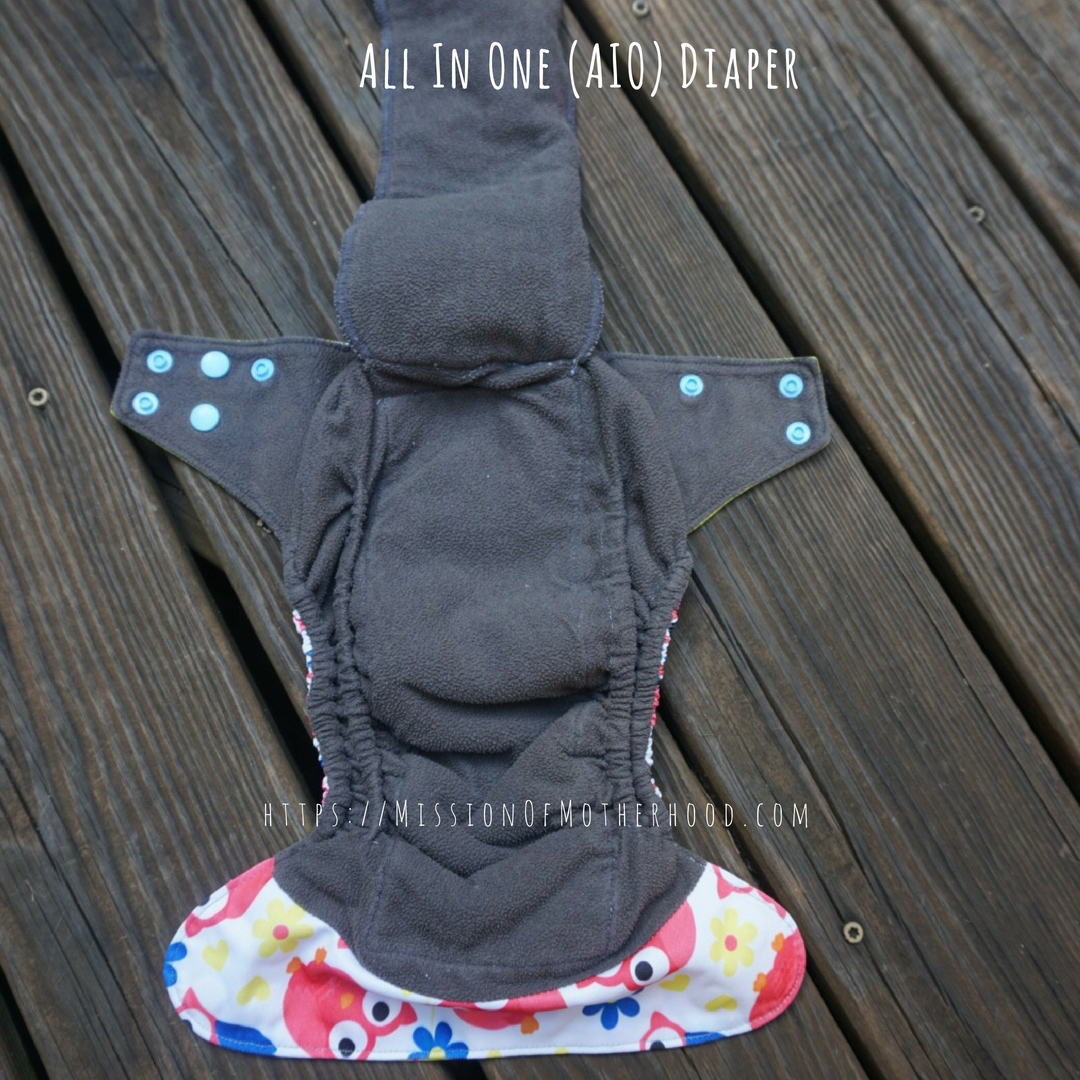
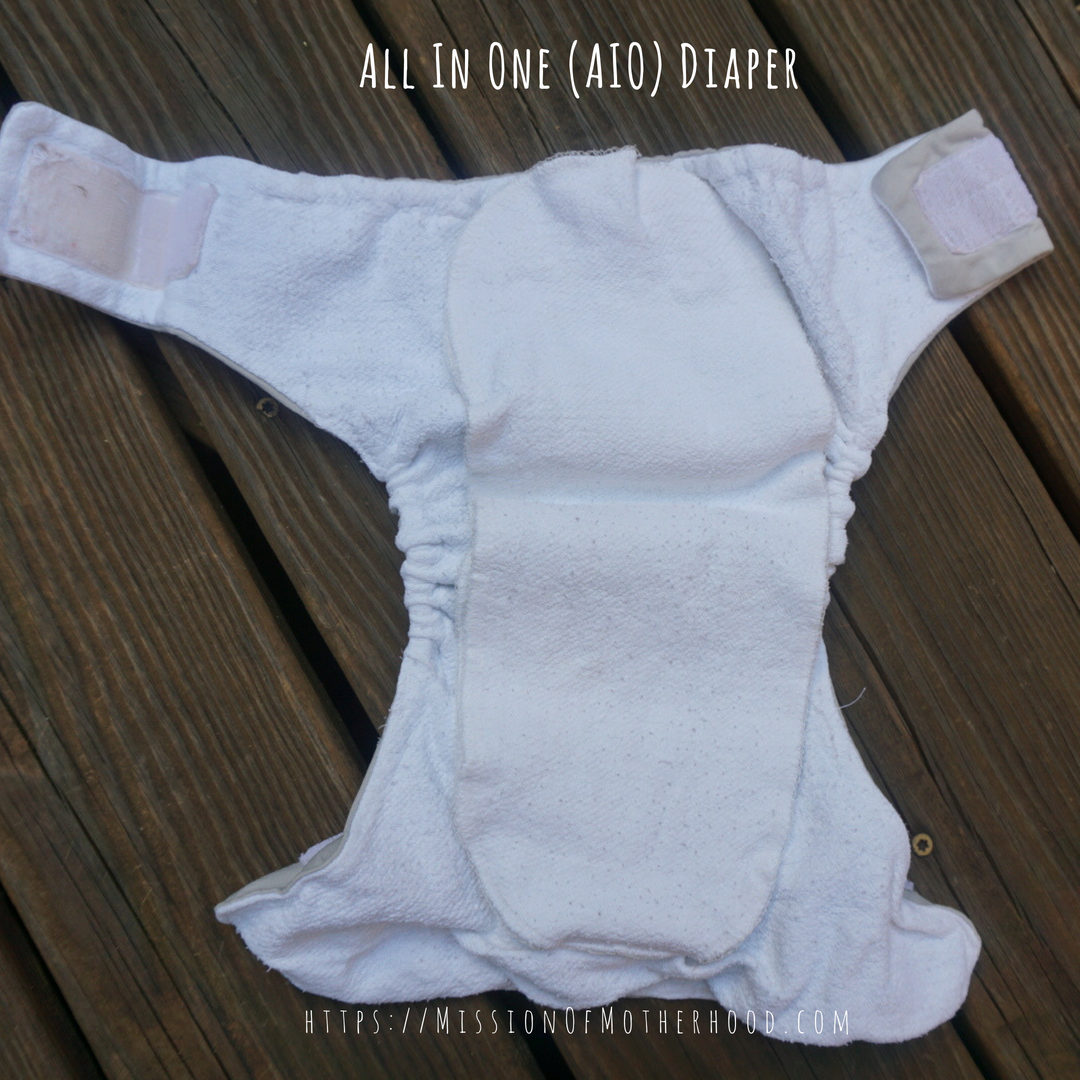
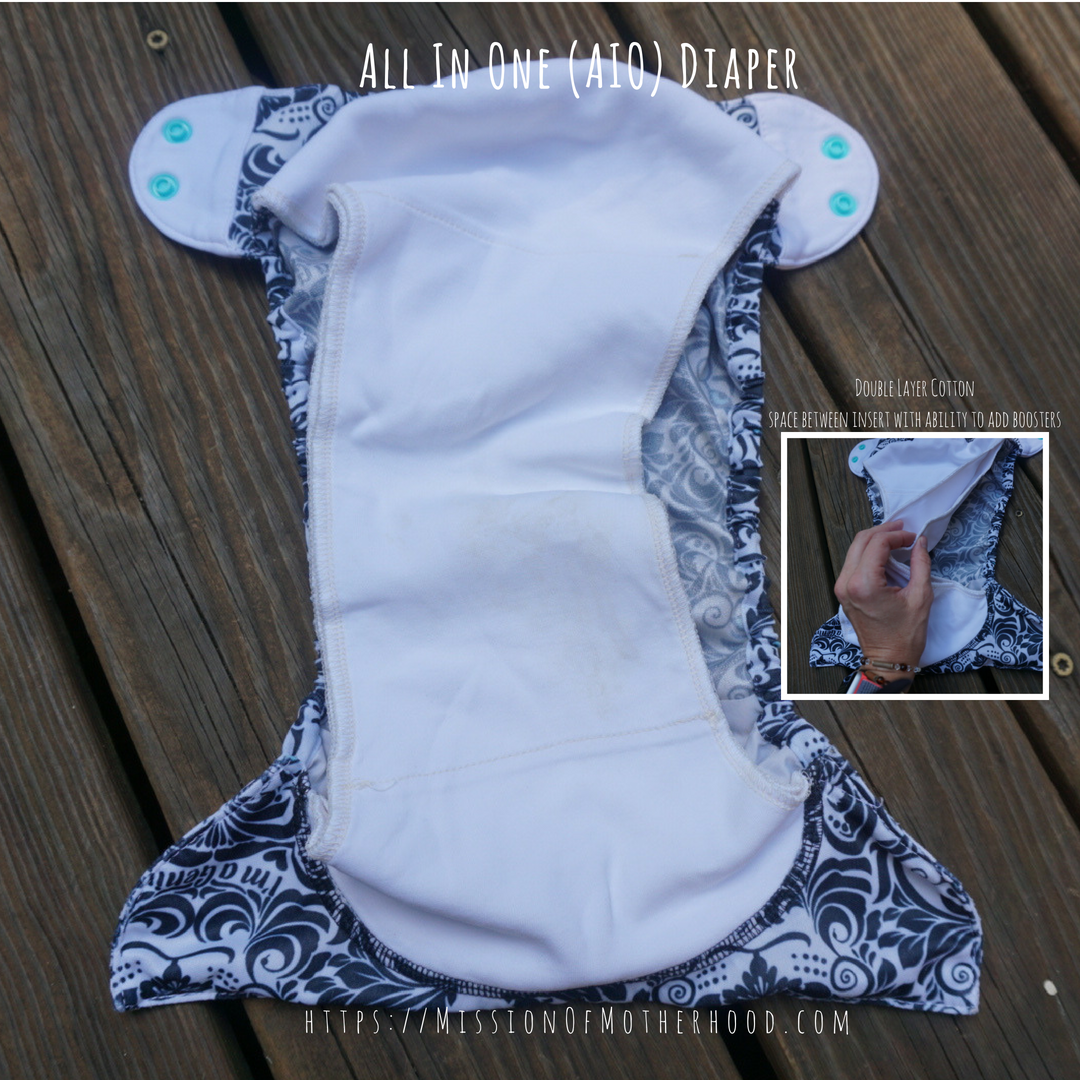
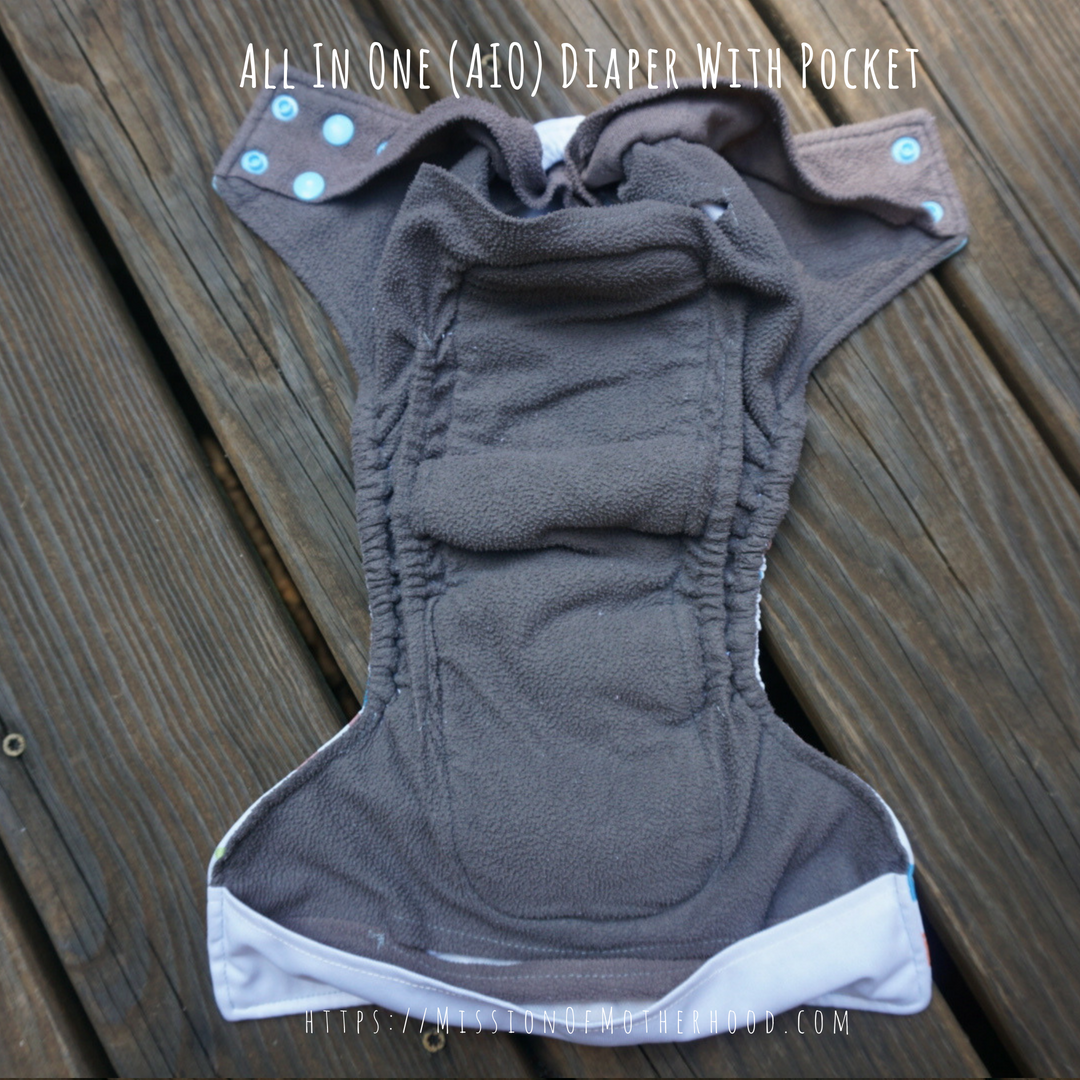
AI2 – All in Two diaper. These are similar to AIOs, but the absorbent insert detaches (usually by snap), allowing you to reuse the cover portion for another diaper change, and makes for quicker drying. They can be all one piece, or separated into two (hence the name). When washed, they require some assembly before putting on the baby. It’s not hard, though: find cover, find insert, put it on the baby, done. AI2s are cheaper than AIOs because you can usually reuse the cover for a few more changes, and you only need to buy more inserts, which generally don’t cost as much. I loved all in twos for the early newborn days with my second, because they go so often but only very little in volume, so her mess was all contained in one insert, I could snap it out, wipe out the cover, and snap or place in another insert.
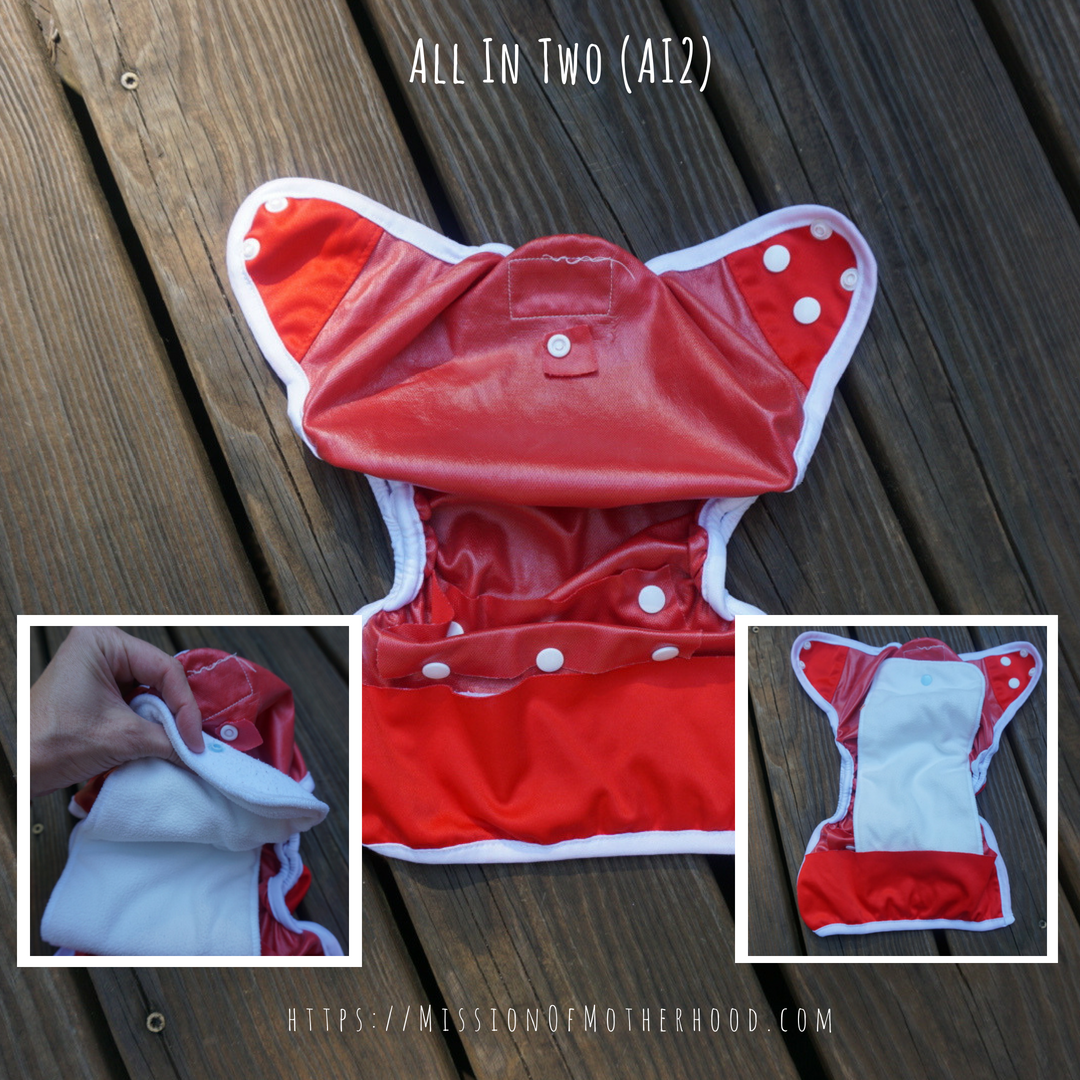
Pocket – Pocket diapers are what they sound like: a pocket. The PUL cover has a sewn-in liner (usually white or grey, and usually soft like fleece or felt) that is open on one side (usually the back, sometimes both ends), allowing you to slide in an insert. Pocket diapers do not hold any waste without an insert! The great thing about pocket diapers is that you can stuff them with ANYTHING: towels, old sheets/shirts, microfiber inserts, terry cloth inserts, jersey cotton inserts, bamboo viscose inserts (fleece/microfiber usually, despite the appealing name of bamboo), and combinations of the aforementioned. You can also buy flats (these are larger thick squares/rectangles of absorbent material that can be tri-folded to fit inside a pocket diaper, some even come in different sizes and absorbencies), prefolds (these are what everyone thinks of when they think of the cloth diapers of yore with the safety pins in them, which many of our moms used as burp cloths), and flour sack towels (from the households section at Target or Walmart, super thin absorbent cotton that cleans well and dries fast) and fold them all to fit inside a pocket diaper.
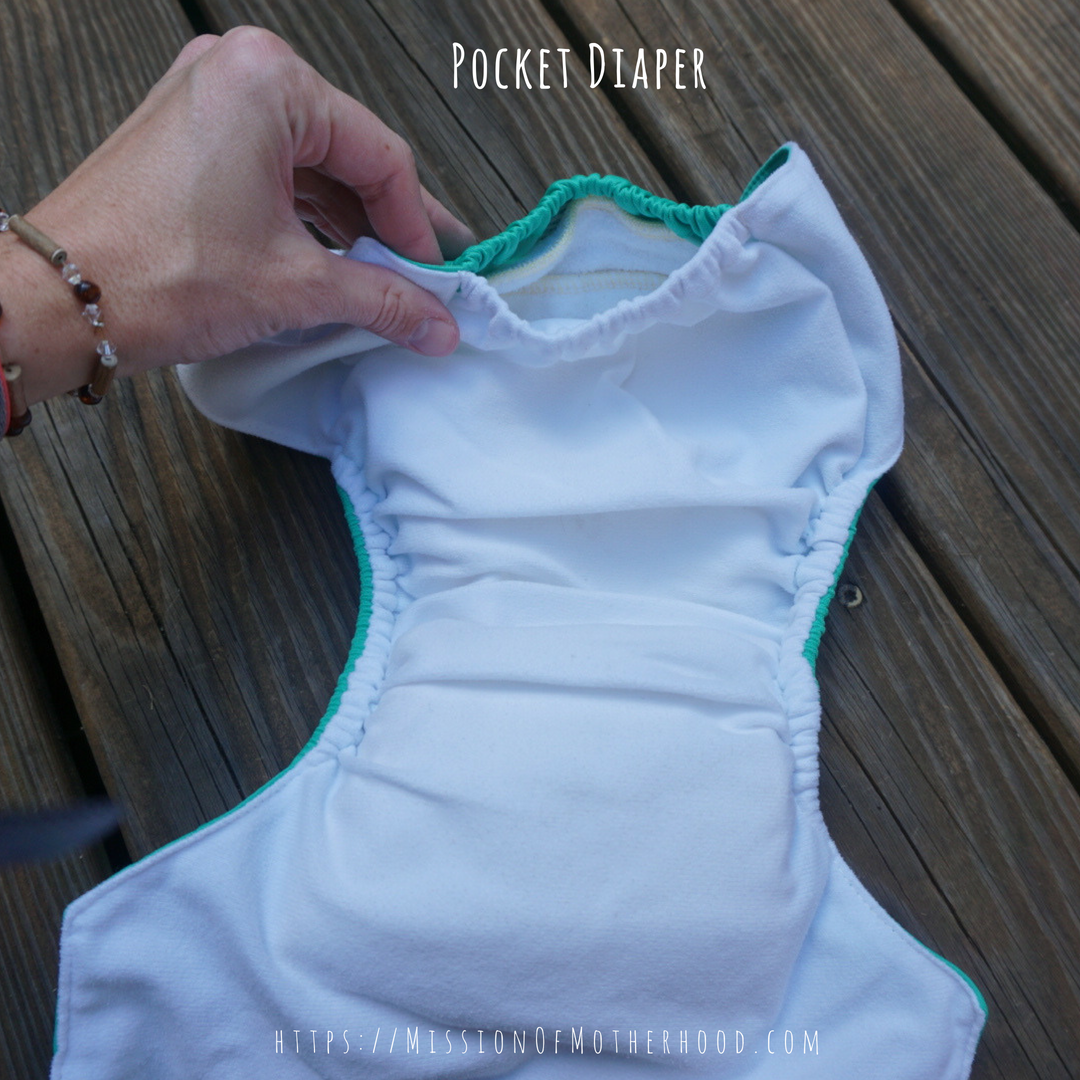
Fitted diapers are 2-parts: the fitted absorbent diaper and the waterproof outer shell cover. Fitted diapers can be bought premade with gussets and snaps, converted from a prefold (this is definitely advanced-level diapering), or converted from a flour sack towel. Fitted diapers are absorbent all the way around (front/back/sides/hips/bottom) vs just the straight crotch area of one of the other diapers mentioned here. Some fitteds come with extra inside boosters, or you can add your own. YOU NEED A COVER OVER A FITTED DIAPER or your babe will just get everything wet. I made the mistake of raving about how absorbent these fitted diapers were to a friend but failed to mention the crucial point about the cover, and I dunno how many sheets and jammies my poor tired friend had to change in the middle of the night before it occurred to me that I’d forgotten to tell her they needed a cover! There are ways to fold a prefold diaper in such a way that it functions as these fitteds do (like here), but I find the convenience of these fitteds far outweigh any cost savings from prefolds. The fitted diaper fit here is one of 4 that I have in this style, and I love them. They are SO absorbent and work better than some of my “overnight solution” diapers (more on that in Cloth Diaper 201). I got it from www.patpat.com, and you can get 25% off your first order if you use my referral code at checkout: fhkvAI.
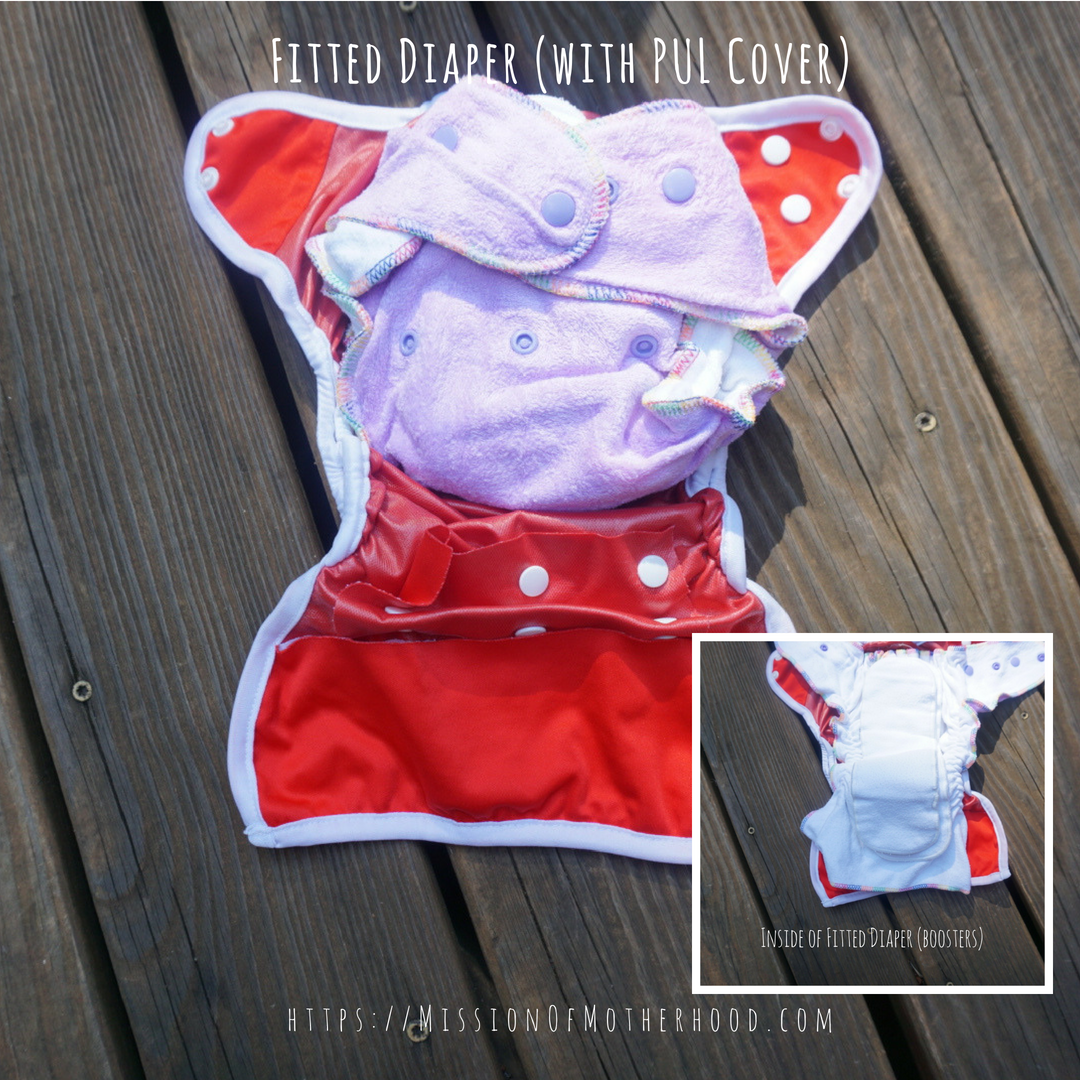
More on Inserts
Pockets are MY FAVORITE because they are very customizable and as I said, you can stuff them with almost anything. Pocket diapers are also great because the liner goes against the baby’s skin, so you can use microfiber inserts without worrying. Many of the liners are fleece which keeps the diaper feeling dry to the baby’s skin. Pockets are a bit of a bummer on laundry day because you have to separate them when you place them in the laundry (unless you are smart enough to separate them after you take them off the baby and before you put them in the pail, which I never am), but because they’re separate they dry faster once they’re clean. But, they do require stuffing (putting the insert inside the pocket cover) before a clean one can be placed on the baby. Laundry day usually consists of me stuffing pockets in front of a TV show. After a while you get good at it and it’s pretty mindless. Once they’re all stuffed, I put them on the shelf so that when it’s time to change a baby, I’ve got one ready to go and don’t have to stuff on the spot.
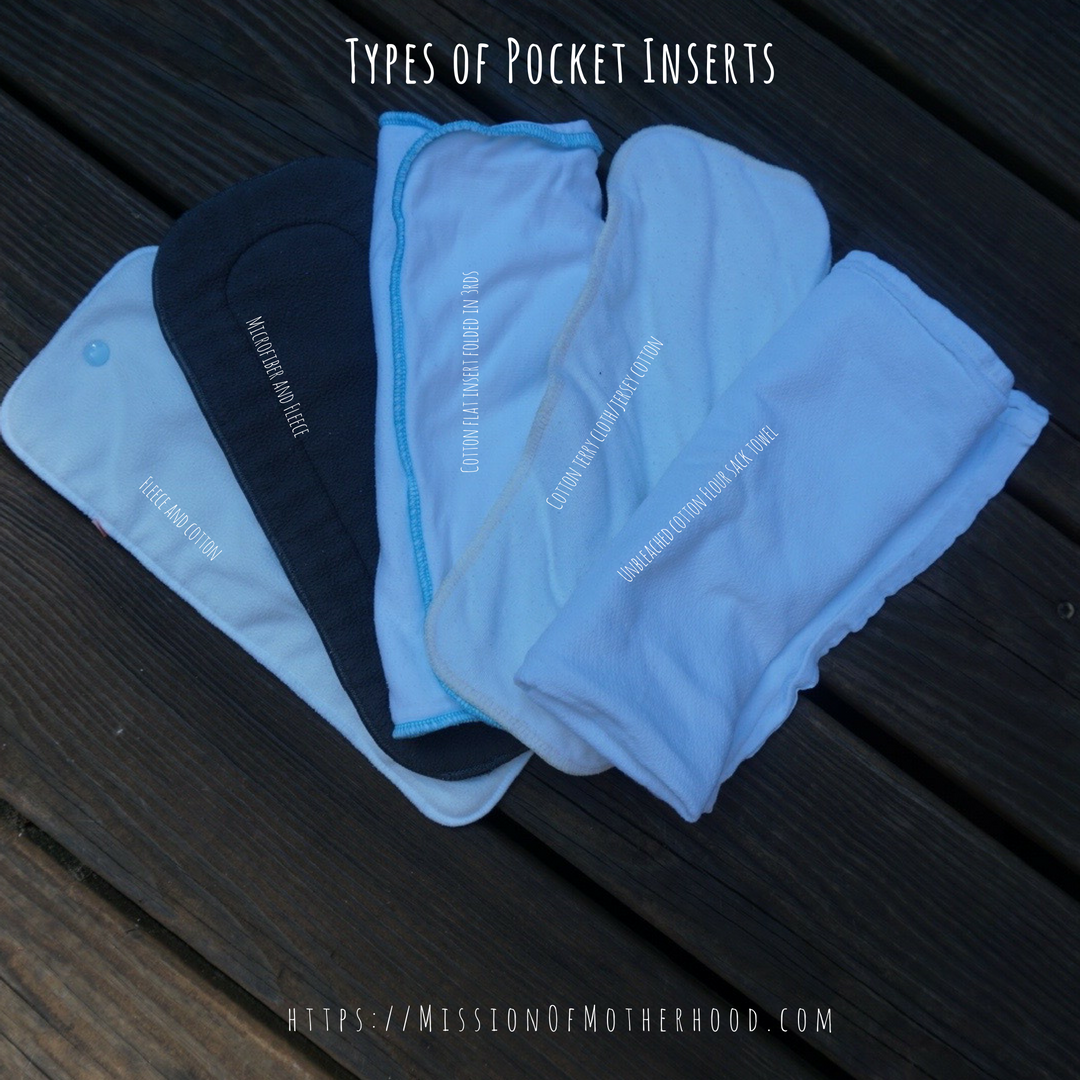
Here are some of the many ways you can find/make/use inserts for pocket diapers.
Prefolds as I said before are what everyone thinks of when they think of the cloth diapers of yore with the safety pins in them, which many of our moms used as burp cloths. Prefolds are made by a number of different manufacturers in a number of different styles, but are effectively the same: 3-5 layers of cotton fabric sewn into a rectangle shape and then sewn in thirds. How it got it’s name I’m not exactly sure, but I imagine it’s as if you took a giant flat and folded it ahead of time so it was ready to go. As I said above, there are ways to use a prefold with a cover the traditional way, so perhaps that’s where the name came from. I do not recommend Gerber prefolds, even though they’re the easiest to find and the cheapest. They’re just too small and they’re not very absorbent. They worked for newborn pee for like a day. They don’t even work for my reflux babes as burp cloths but that’s another story. My favorite prefolds are Econobum.
Flats and FSTs are two good things to stuff pockets with. They’re basically several layers sewn into a square (flat) or one large square (FST) that you can fold either lengthwise or widthwise depending on the size of the diaper (this is where the S/M/L rise adjustment comes in). My favorite flats are Applecheeks. My favorite FSTs are Threshold or RoomEssentials from Target. FSTs can be folded into a pad shape and stuffed in a pocket or done in an origami fold and used under a cover (more like a fitted diaper).
DIY inserts are the best part about pockets. As I said above, microfiber inserts are super easy to make yourself: buy some microfiber kitchen washcloths from the dollar store, fold them up in thirds, sew them together, bam: done! You can sew a fleece layer on top or add a snap that will make it an AI2 or help it stay in place in a cover easier. The possibilities are almost endless! You can use old towels, tshirts, burp cloths, receiving blankets, anything that is absorbent and will fit inside the pocket. It’s GREAT, and the more inserts you have the easier it is on laundry, adding absorbency, etc. Since so much of it can be recycled, there’s no need to worry about buying new pocket covers and not having enough inserts (Sometimes I’ll get a deal on PatPat for $2-3/per pocket cover, and it’ll come with 0-1 insert depending on the deal, but thankfully I have more than double the inserts compared to diapers, so I don’t have to worry). I love that pockets and DIY inserts allow me to customize the fit, absorbency, material, and thickness of the diapers for each of my kids. More on DIY CD customization in advanced-level Cloth Diaper 601!
Where to Buy
In addition to there being a ton of types and brands of diapers, there are also a ton of places to buy them. I recommend a “try before you buy” approach whenever possible. Find another fluff-loving friend who can show you the ropes and lend you a few. I used to be grossed out by the thought of pre-loved diapers, but once I learned more about it, I realized CD moms are super passionate about it and go to great lengths to take care of their diapers. I also follow the Fluff Love recommendations for washing and doing a bleach soak before you use them, even from a trusted friend: different baby, different germs. (More on that in Cloth Diaper 301).
- Amazon
- PatPat (app or web, 25% off first order with code: fhkvAI)
- Local BST CD groups on Facebook
- Facebook Marketplace
- Buy Buy Baby (BumGenius are sold here, though these are not my favorite for all the hype they get; they’re easy to find and easy to buy with gift cards because they’re sold at BRU and BBB, and are a good starter diaper, but they don’t hold up as well as some others for the price. The pockets, especially, are the same as some of the other brands I list below but their elastics wear out fast compared to the other brands I have. I will say I LOVE the BumGenius Freetime AIOs, the black and white one pictured above, so I do recommend those even with relaxed elastics. Use a BBB coupon though because they’re $20 new, even on Amazon!)
Brands I Have Used Myself and Can Recommend
These are just a few that I have in my regular rotation that I wrote down at a glance, in rough alphabetical order. There are tons of brands, and tons of patterns, but they all have the same basic parts: cover, liner, insert. There are only so many ways you can assemble PUL and elastic! Literally, hundreds of brands. Most of these are available on Amazon, PatPat, and occasionally Zulilly.
- AnAn Baby
- Anma Baby
- AlvaBaby
- Applecheeks
- AngelLove
- Bielsen
- BestBottoms
- Babyland
- BabyKicks
- BabyGoal
- Blueberry
- Big Elephant
- BumGenius
- Econobum
- GroVia
- gDiapers
- HappyBaby
- HappyFlute
- HiBaby
- Kawaii Baby
- LBB
- Mama Koala
- OsoCozy
- Planet Wise
- Rumparooz
- TidyTots
- Thirsties
- WAHMs
That’s a Wrap!
Whew. So, what did I miss? Any other CD moms out there? How would you help someone get started?
Crash Course on Cloth Diapering:
Cloth Diaper 101: getting started with cloth diapers
Cloth Diaper 201: overnight cloth diapers
Cloth Diaper 301: storing, cleaning, and laundering your cloth diapers
Cloth Diaper 401: cloth wipes, and diaper safe creams, powders, and combatting diaper rash
Cloth Diaper 501: troubleshooting cloth diapers: strip, yeast, and bleach soaks
Cloth Diaper 601: repairs and modifications to your cloth diapers
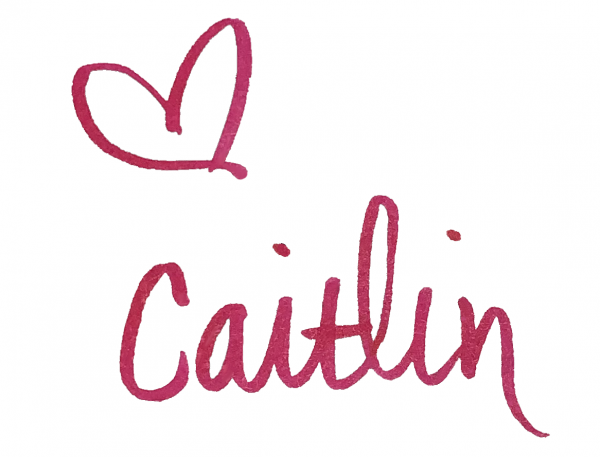


Hi! Thanks for your post – I started cpoth diapering a week ago with pat pat diapers. I’m finding that it’s leaking around the legs (tightening didn’t seem to work). I bought microfiber cloths to add to the cotton ones from patpat. I’ve done double layers. I keep seeming to get leaks! My husband suggests that it’s because I got patpat branded diapers – but it sounds like you had much success with them. Do you have any suggestions for me? Thanks!! (I’m waiting for bamboo inserts to come in the mail). But for now I’m back to disposables for a week because my boy has got quite a red and sore bottom at the moment! Not sure if it’s the diaper… How often do you recommend a change of nappy? Thanks so much!
How fun! Honestly, I didn’t buy many new diapers from any other companies, so I’m not sure. How often are you changing him? I found most of the leaks around the legs came from a fit issue or a compression leak (pants too tight or baby sitting and “squeezing” the liquid out much like wringing out a dish sponge). Leaks can be frustrating, I’m so sorry! You might also want to look at your laundry routine: are they being fully rinsed, do they need a bit more detergent, etc. You can try switching up the inserts too, to see if a different material works better. I have only cloth diapered girls, so I don’t know if perhaps you need to pad the bulk of the absorbency closer to the front vs down in the middle for girls.